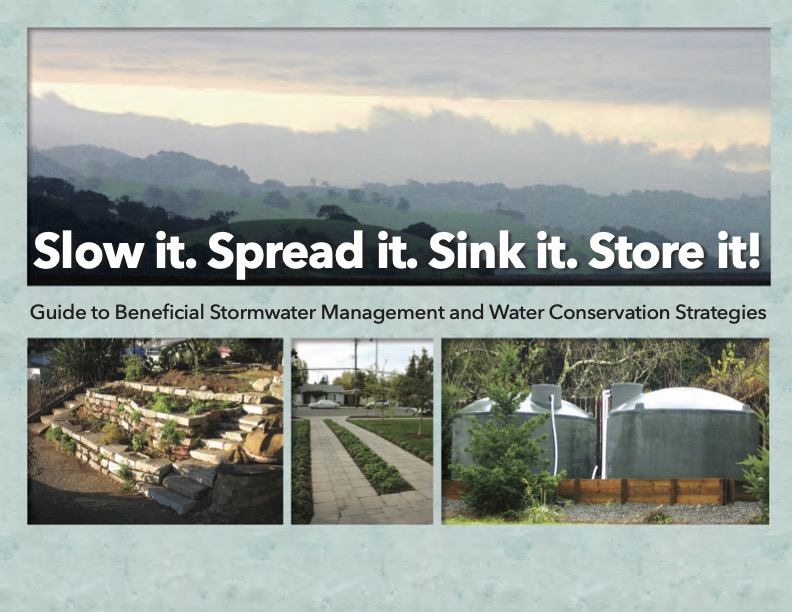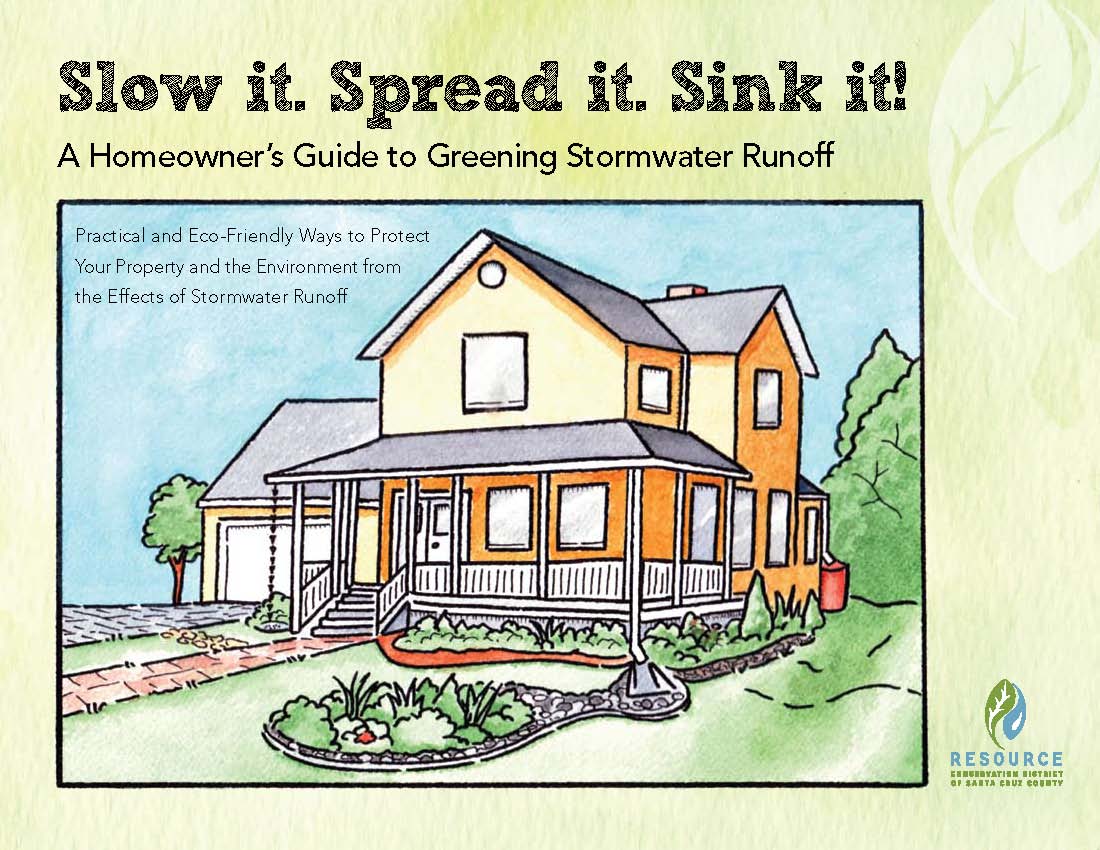Like Carlo Petrini’s Slow Food movement, we have our own “slow water movement” at OAEC. You might know it as the permaculture mantra, or perhaps you’ve seen it as part of your county’s resource conservation guide, but either way, “Slow it, Spread it, Sink it” is used around the world to encourage best practices with water management.
You may be less familiar with the phrase’s origins. OAEC’s Brock Dolman coined the term in the late nineties when he saw the connection between permaculture principles and stormwater management happening at the city, state, and federal levels thanks to the Clean Water Act.
In Brock’s own words: “When I began working in urban stormwater management and low impact development, I brought the perceptual design method worldview of permaculture. Permaculture is a method of how to create regenerative and socially just systems that are based on natural patterns and processes. So when I was looking at stormwater management, and green infrastructure versus gray infrastructure, we used those tools—the principles of protracted observation, stacking functions, relative location, planned redundancy, and using onsite resources. These are permaculture design principles. They apply to everything we do.”
The magic of Slow it, Spread it, Sink it (explained thoroughly here in this Pacific Horticulture article) is that it’s moved far beyond the permaculture circles. “If it were just about building swales, sure, that’s great,” says Brock, “But the real gravitas came in when the regulatory communities started using it.” He points out that the concept wasn’t anything new. It was the creation of a sticky saying and having a “loudmouth,” in Brock’s own words that generated so much traction. He’s given hundreds of talks over decades, advocating the concept, including at his 2012 TEDx talk and his 2009 plenary at Bioneers in which he got the crowd to chant, “Slow it Spread it, Sink it,” in unison. The beauty is in the simplicity of it. A simple alliterated phrase really encapsulates a whole mindset and suite of practices.
The phrase is everywhere, and we mean everywhere. Both permaculture and county officials use it as a rallying cry for rainwater harvesting, bioswale construction, use of pervious hardscaping materials, and beyond. Within California, It’s touted by Sonoma County, Santa Cruz County, East Bay Municipal Utility District, Napa County, and more. Gardening organizations such as Monterey Bay Friendly Landscaping, and the University of California Agriculture and Natural Resources department (responsible for the state’s Master Gardeners) also promote the idea. Outside of California, British Columbia promotes it, Rockville, Maryland is on board, and Brock has fielded inquiries from as far as the Congo and Australia.
For those really into the saying, it actually has evolved to be, “Slow it, Spread it, Sink it, Store it, Share it,” says Brock. This reflects the importance of moving from the “drain-age to the retain-age, and equitably redistributing this precious resource throughout our Basins of Relations,” says Brock.







